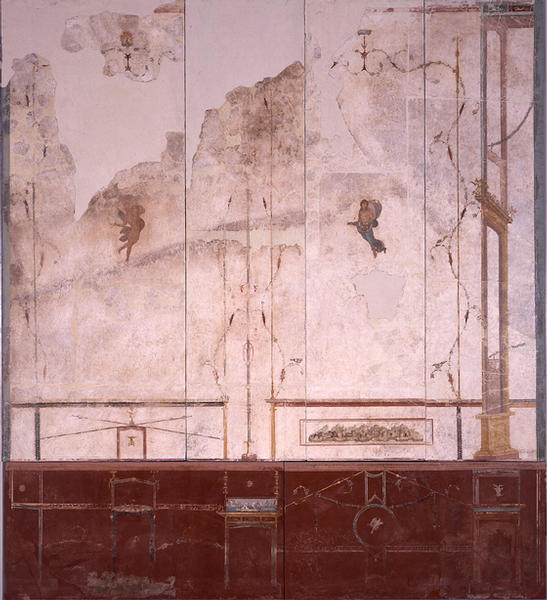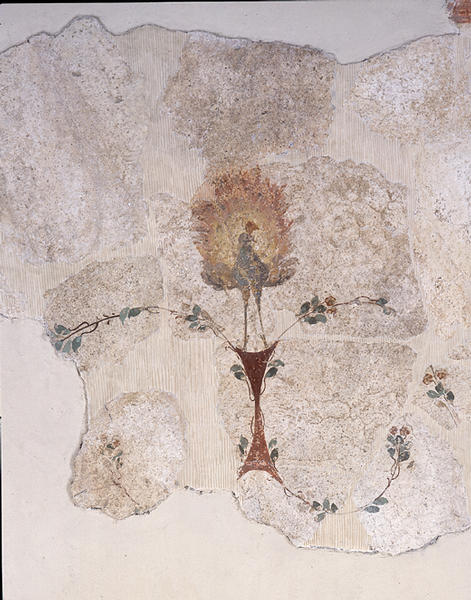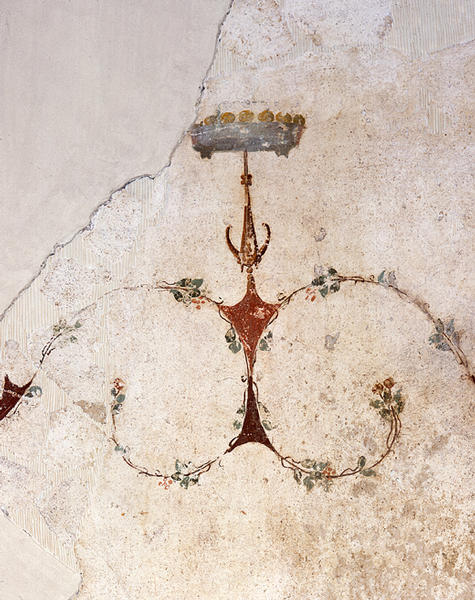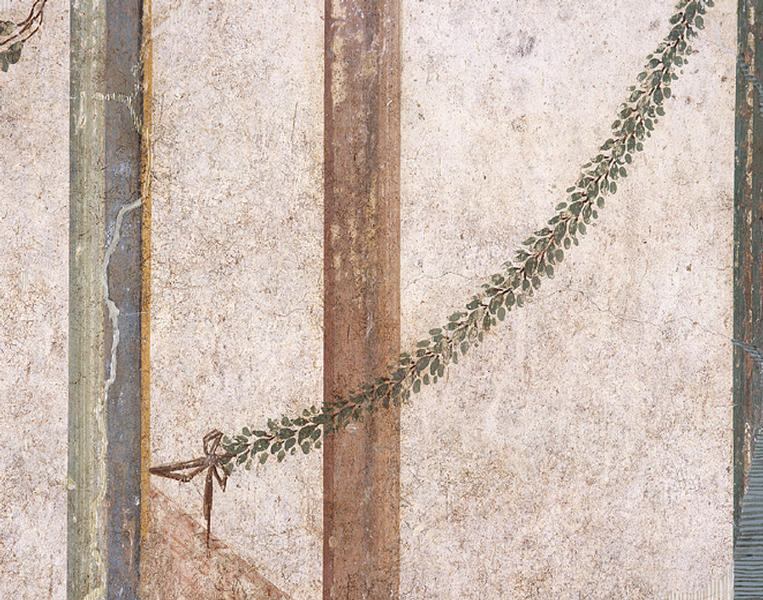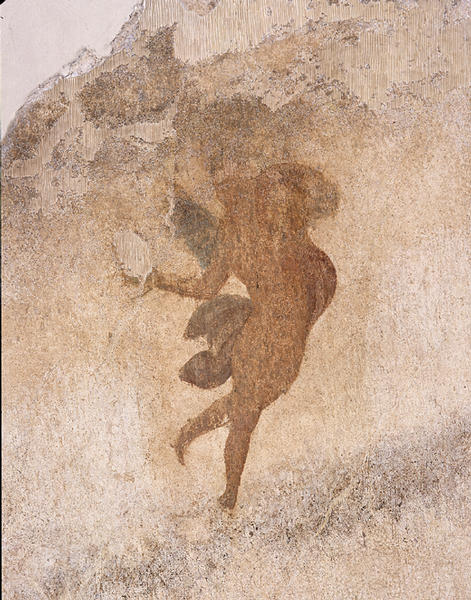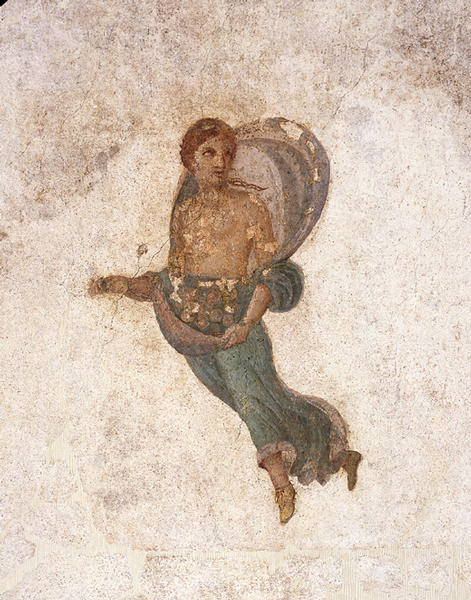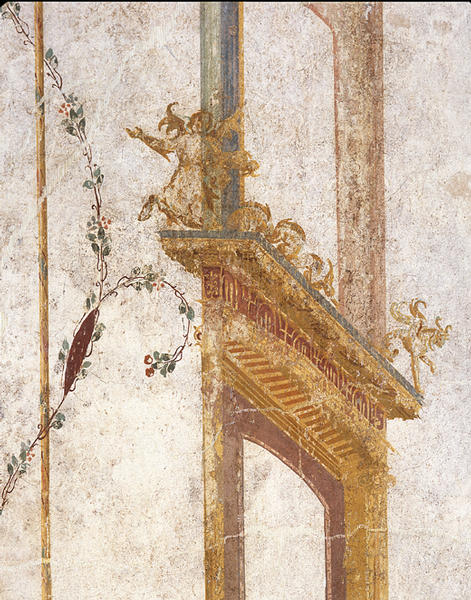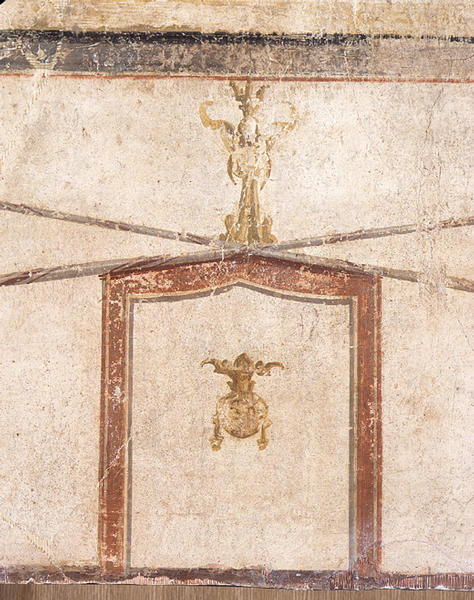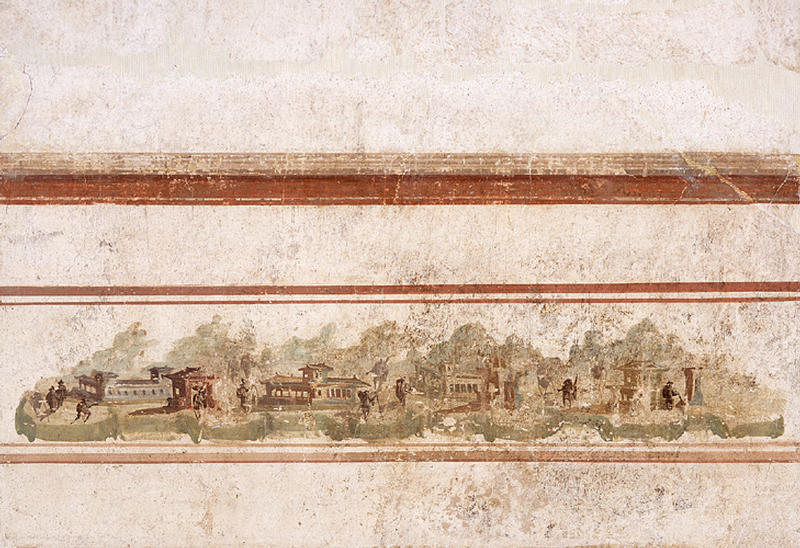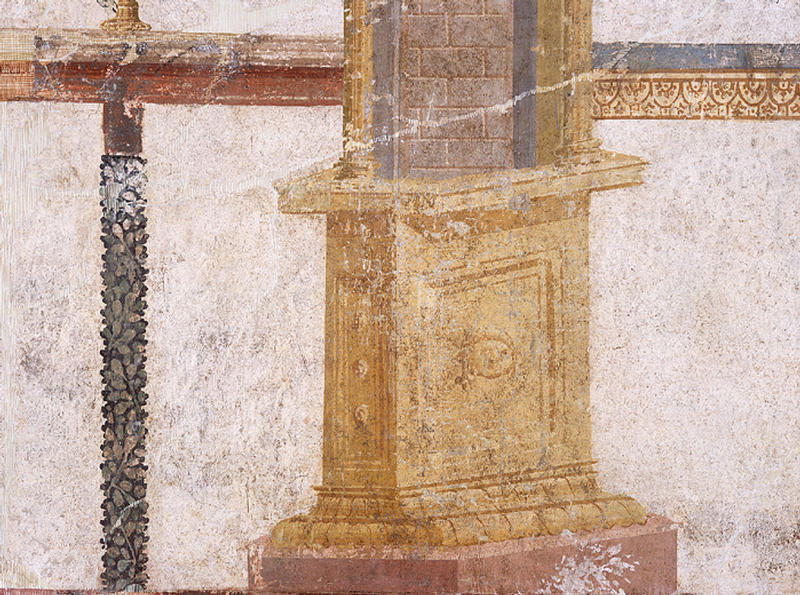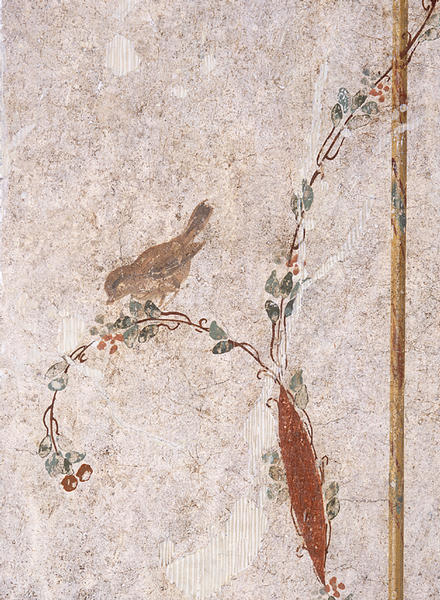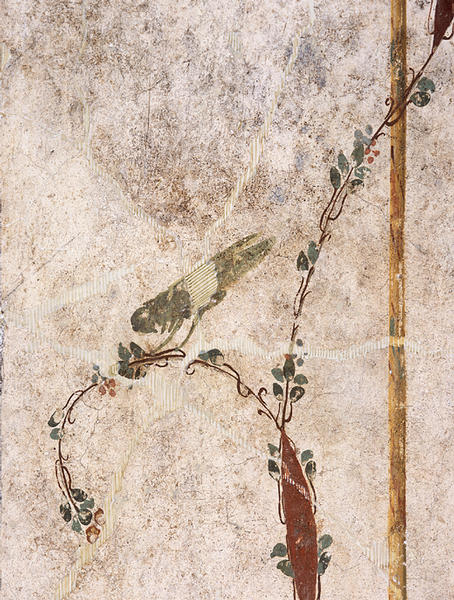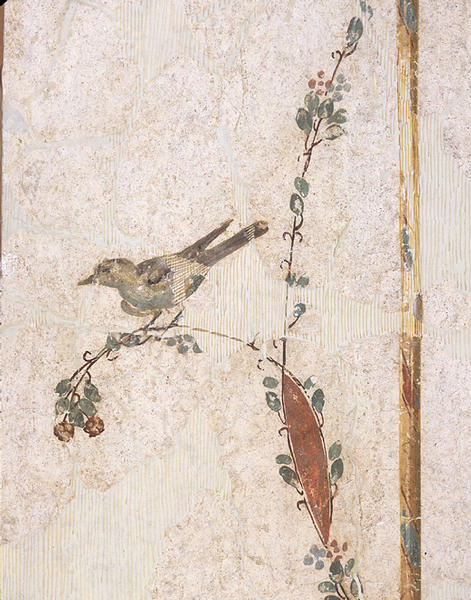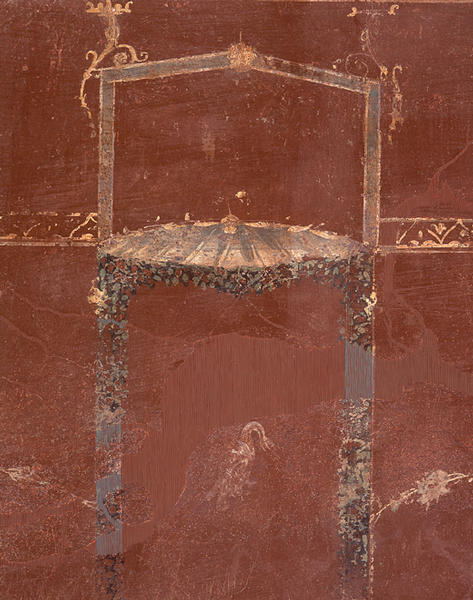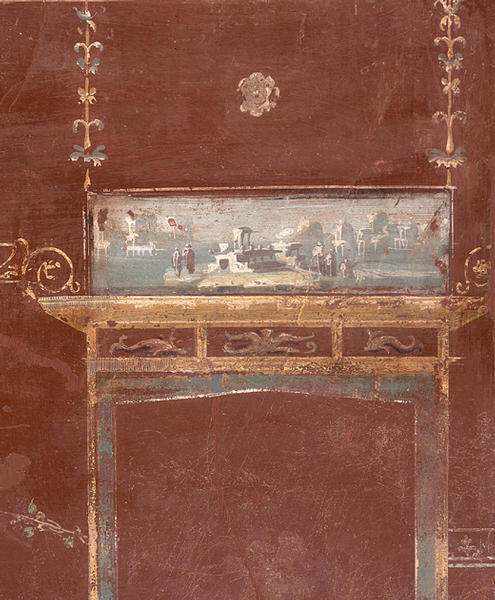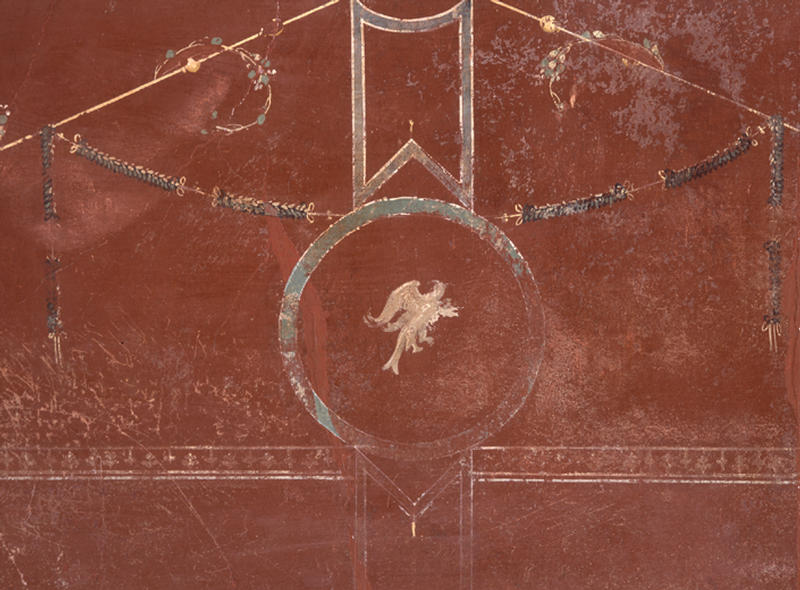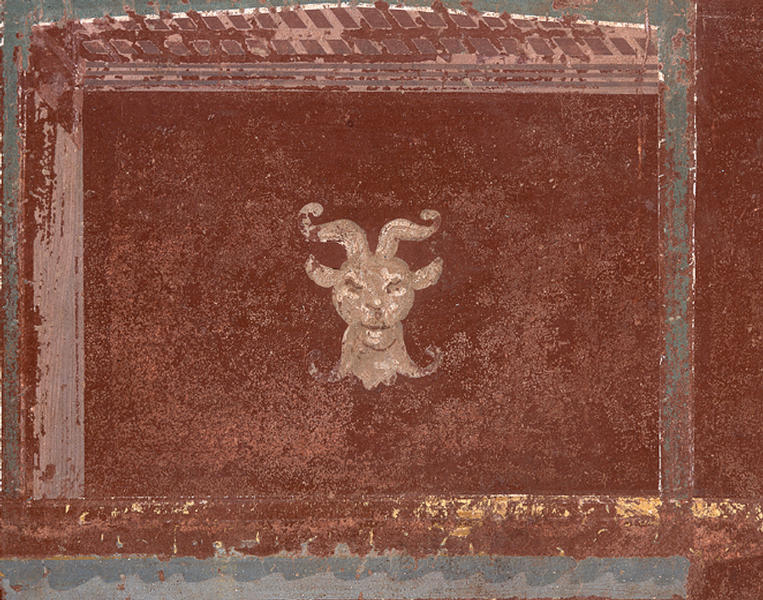Spirits of the Seasons
- 1st century A.D.
- Fresco
- H-336 W-306
Catalogue Entry(Bac#040)
1st century A.D.
Fresco
L. 336.0 cm, W. 306.0 cm
The use of bright pigments to decorate wall surfaces has long been widely used, and in the Hellenistic period, ca. the 3rd century BC, it is thought that decorative wall surfaces were created to imitate the use of expensive natural stone wall coverings. These frescos developed during the course of the Roman period and each room or space was fitted with frescos in various styles to create either luxurious or comfortable illusions in their inhabitants. This fresco is generally classed as a IV style of fresco. In this case the wall surface was divided into rectangular sections in an architectural manner, and then a small design was painted in each of those sections. The painting surface was divided into a large wainscoting area below and a wall surface above, and we can also imagine that there was then a further layer of frieze painted above these two areas. The small architectural units then had combinations of small paintings, whether canopies, sirens, mountain goat heads, or framed landscape scenes. The upper wall surface had a white ground painting, a narrow column was depicted in the center of the wall, and architectural elements on either side are the base for Thrysos (Dionysus's staff) from which extend waves of vining plants and form two vertical frames. The left vine frame has a peacock in its upper center. A female figure thought to represent the spirit of the seasons is depicted in the center of each of these frames, and on the right side the figure has her robe filled with fruit. The lower horizontal spaces surrounded by architectural motifs have a crossed thrysos motif in the left space, and a framed divine precinct landscape scene in the right space. The right corner of the upper area of the upper frieze has a perspectively rendered depiction of an architectural element with seahorse and griffin motifs. Judging from the depiction on the left section, however, we can see how this whole panel would have been the left section of an entire wall fresco. In other words, there was probably a corresponding right section which would have had similar seasonal spirit theme panels. Given this overall construct, we can consider that here the right panel shows the spirit of autumn, while the left panel shows the spirit of winter.
